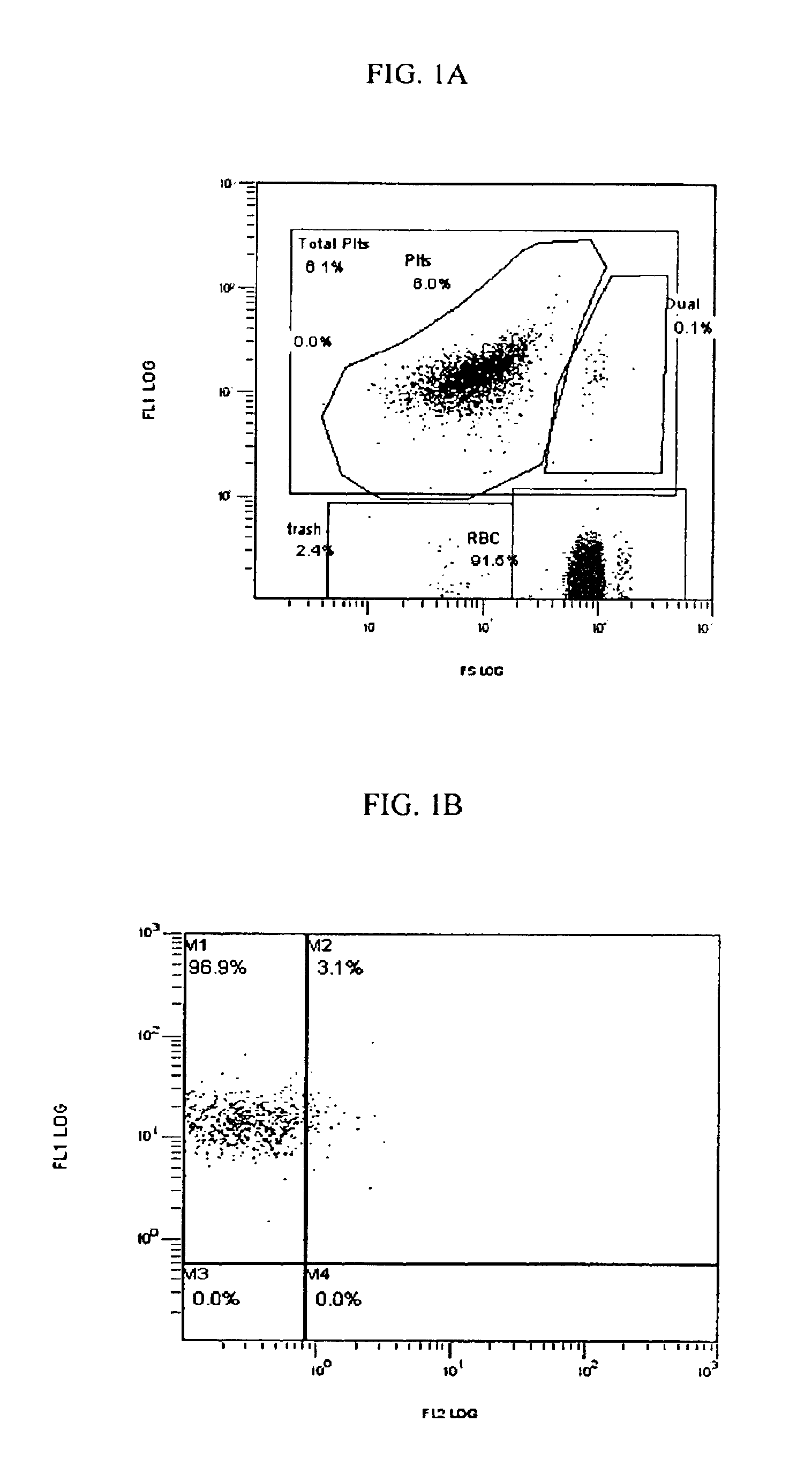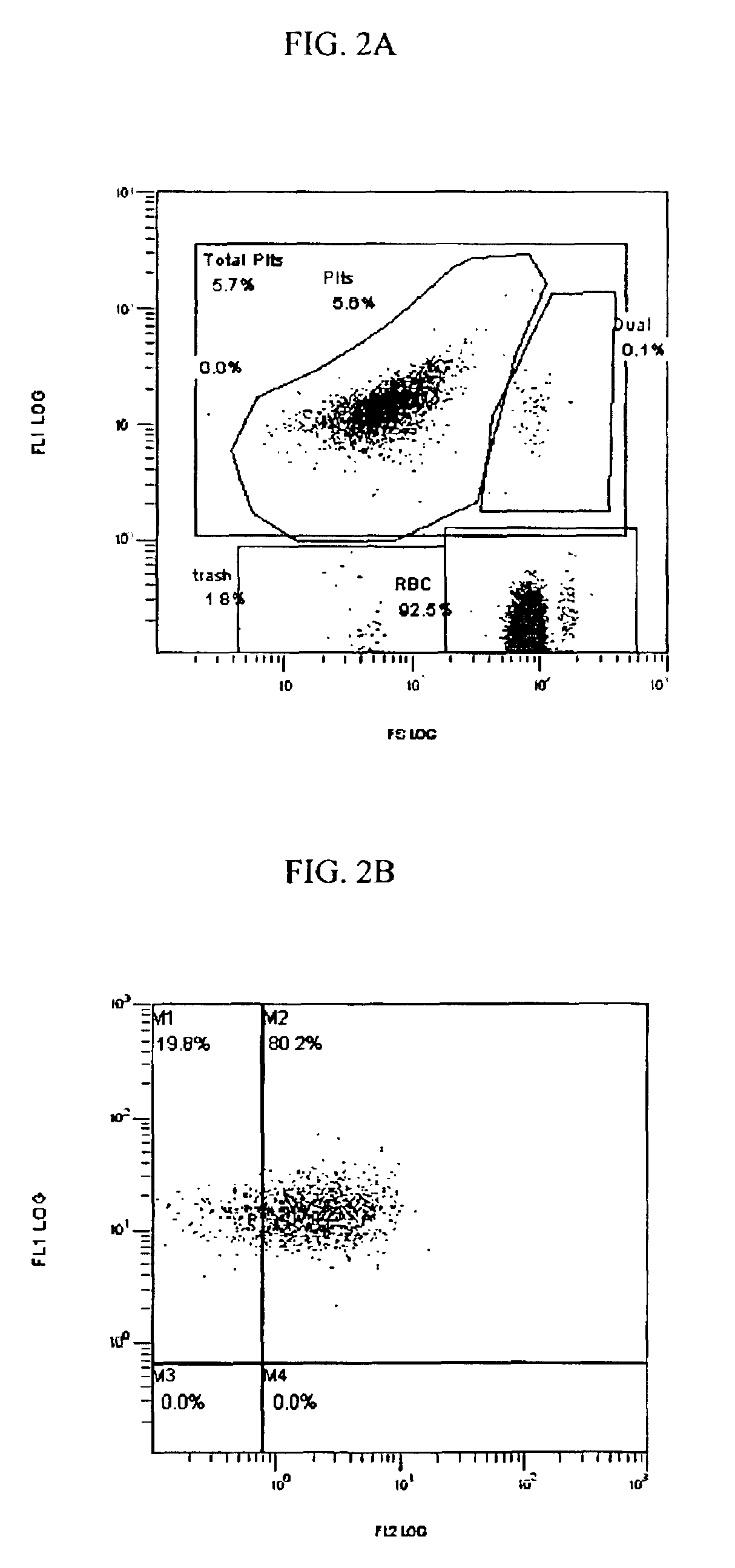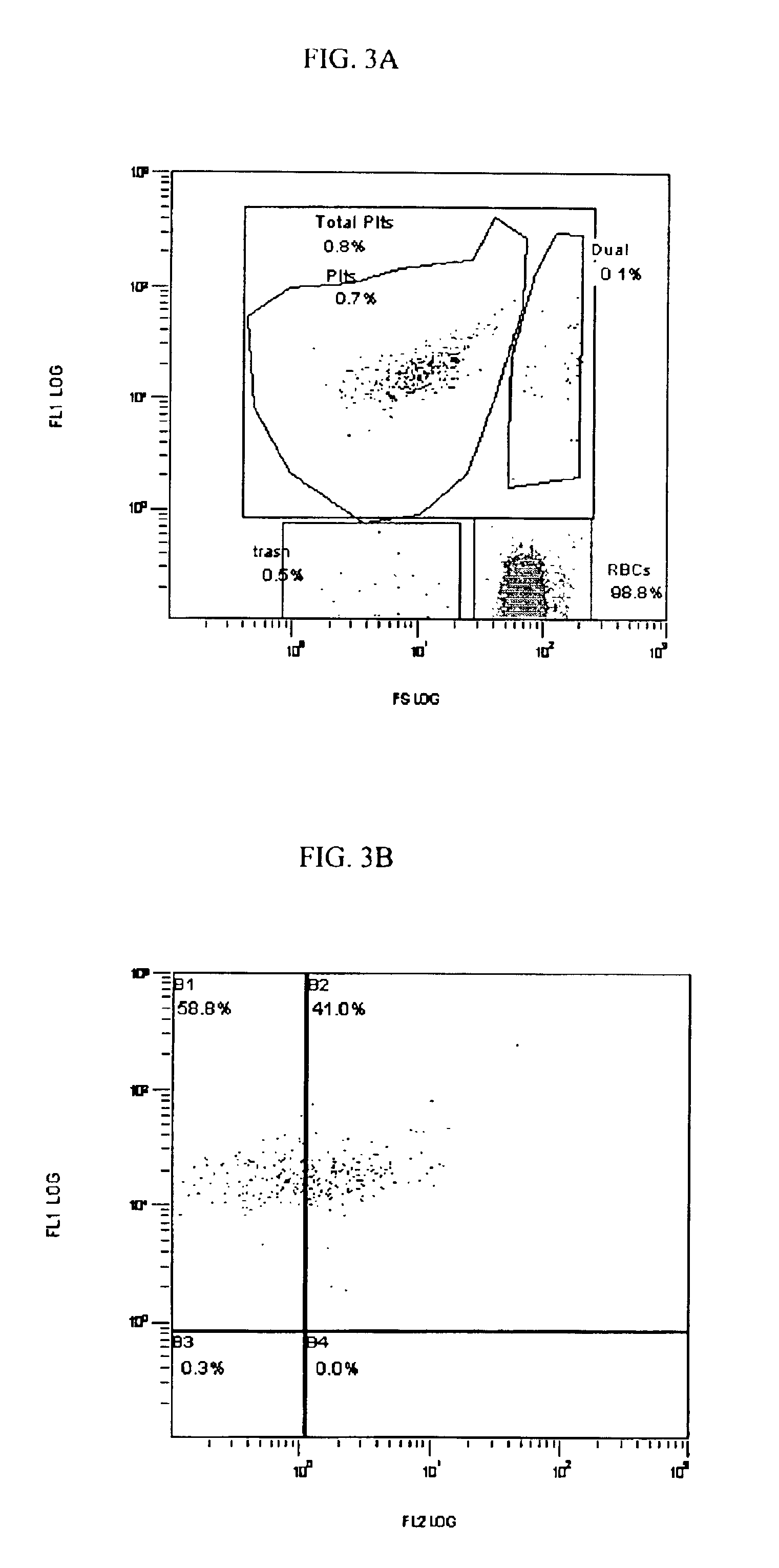Formaldehyde-ammonium salt complexes for the stabilization of blood cells
a technology of ammonium salt and blood cells, which is applied in the field of formaldehyde-ammonium salt complexes for the stabilization of blood cells, can solve problems such as unadjustment, and achieve the effects of preventing or reducing cellular activation and response, and maintaining the integrity of other biological cells and tissues
- Summary
- Abstract
- Description
- Claims
- Application Information
AI Technical Summary
Benefits of technology
Problems solved by technology
Method used
Image
Examples
example 1
Analysis of the Complexes Formed by the Reactants Present in the Stabilization Reagent
[0101]In one experiment performed to generate the stabilization reagent composition of this invention, the reagent was generated by using ammonium citrate and formaldehyde as the reactants. Complexes formed thereby were demonstrated by the shift in the NMR data indicated in Table 1 below. In Table 1, the hydrogen atom in bolded type illustrates the proton measured. T=0 means that the shift was observed immediately post-mix for the stabilized reagent composition of the invention and at one time for the components of the reagent individually. T=14 indicates storage for 14 days post-mix of the components of the reagent composition of the invention.
[0102]
TABLE 1NMR DataObserved ShiftProtonTheoreticalT = 14CompositionTypeShiftT = 0Apost-mixFormaldehydeRCHO 9-108.32—AloneROH 1-5.54.69—(CH2O)HC—OH3.4-4 3.22—Ammonium CitrateHC—CO2H 2-2.62.51-2.65—Alone (C6H14N2O7)StabilizationHC—CO2H 2-2.62.51-2.65No chang...
example 2
The Reagent Composition Formulae
[0109]Additional experiments were designed and displayed utilizing the Design-Expert Version 5.0.8 statistical software produced by Stat-Ease Corporation, Minneapolis Minn. 55413. Such experiments were used to test ranges of concentrations and components for optimization of the stabilization reagent composition using response surface statistical methods for process optimization and modeling contained within the software algorithms. The ranges of the components of the stabilization reagent composition of this invention that were tested are indicated in Table 2.
[0110]
TABLE 2Components and Ranges of Stabilization ReagentRange ofSolution ComponentExamples of ComponentconcentrationsAmmonium salt(s)ammonium citrate (dibasic),Up to 0.14 Mammonium citrate (tribasic)FormaldehydeParaformaldehyde (aq) orUp to about 0.8% byformaldehyde gas dissolvedvolume in waterinto liquid, or formalinAlkalineTetramisole10-60 mMphosphatasePyrophosphate (10*H2O)Up to 50 mMinhibi...
example 3
Comparison of Prior Art Components
[0128]The functional response of the platelets in their expression of CD62p is primary to one of the clinical applications of this invention and to the invention itself.
[0129]In one experiment, fresh normal blood was mixed 1:1 with Solution A, Solution B, a Control or the stabilization reagent (A+B) of this invention within 1 hour of drawing and the numbers of red blood cells (RBC) and percent difference in the numbers of platelets (PLT) measured on days 0 and 3.
[0130]The same protocol was conducted on activated blood samples. Activation means that the blood and associated platelets were stressed by the addition of a well documented, well defined, broad spectrum and ubiquitous platelet activating agent, i.e., Phorbol 12-myristate 13-acetate (PMA) at a final concentration of 11.58 μM. A PMA stock solution 100 μg / ml in dimethyl sulfoxide (DMSO) was used (0.162 mM Phorbol 12-myristate 13-acetate FW 616.8). Two μl PMA stock solution / ml blood (dilution {...
PUM
| Property | Measurement | Unit |
|---|---|---|
| pH | aaaaa | aaaaa |
| weight volume | aaaaa | aaaaa |
| time | aaaaa | aaaaa |
Abstract
Description
Claims
Application Information
 Login to View More
Login to View More - R&D
- Intellectual Property
- Life Sciences
- Materials
- Tech Scout
- Unparalleled Data Quality
- Higher Quality Content
- 60% Fewer Hallucinations
Browse by: Latest US Patents, China's latest patents, Technical Efficacy Thesaurus, Application Domain, Technology Topic, Popular Technical Reports.
© 2025 PatSnap. All rights reserved.Legal|Privacy policy|Modern Slavery Act Transparency Statement|Sitemap|About US| Contact US: help@patsnap.com



